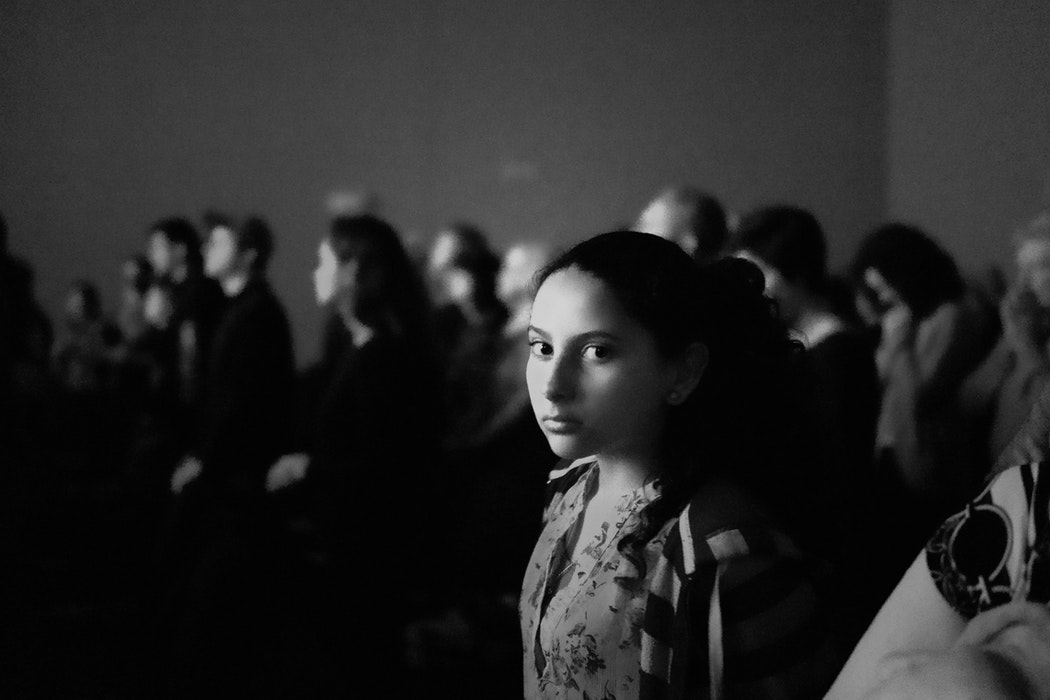Are you good at reading people? Here's why it's vital that you pay attention to the facial expressions of your listeners!
The day after Memorial Day this year, a photograph on the front page of The Wall Street Journal screamed out a message about body language. Well, at least for me it did.
The photo showed President Trump and Japanese Prime Minister Shinzo Abe shaking hands the day before, and the actual caption read: "Trump and Abe at Odds on Kim." When I taught ESL at Harvard, I always said that understanding the contextual code of headlines was a good test of one's mastery of English. When deciphered, that particular headline stated that the president and the prime minister disagreed about North Korea's latest missile tests.
And was that disagreement obvious from the photograph! Although Trump and Abe were shaking hands (an entirely civil gesture), both wore a tight-mouthed grimace. Their expressions proclaimed loudly, "We have to do this for the cameras, but I'm right, he's wrong, and I'm not budging from my position!"
Are you good at achieving positive impact? Get your body into the act! Download my free public speaking guide, "Body Language Rules: 12 Ways to Be a More Powerful Speaker."
Facial Expressions and Public Speaking
Interestingly, my coaching session that same morning reinforced the body-language-in-public-speaking theme. I was helping a client prepare his hedge fund's pitch to a group of investors. I had been speaking about eye contact, and he casually said:
"I guess it's a good idea to look at my listeners so I can gauge their reaction."
To me, the coincidence in the same morning—the grimaces in the photo on the front page of the newspaper, and my client mentioning noticing his audience's reactions—was too good to ignore. It was time to talk about the importance of facial expressions in public speaking.
The Mind's Canvas
As human beings, we're uniquely poised to pay attention to what each others' faces are showing. Not only do we recognize each other from this clue (whereas animals rely on their sense of smell). We also interpret a wide range of reactions based on what the 43 muscles in the face are showing in their various configurations.
We call these intricate ways the facial muscles react "expressions". What we mean by that, of course, is the emotional response of the person now made visible.
This exquisite form of communication can convey extremely subtle nuances of emotion, and is an easy and practical way for people without a common language to understand each other. It is indeed "the mind's canvas."[1] Given the varied nature of the audiences you speak to—in addition to the fact that listeners are different from you yourself—it's a no-brainer that you need to both understand and use facial expressions skillfully. Simply put, your public speaking toolbox is partially empty without this skill.

Are You Reading Your Audience?
Let's start with interpreting what you're seeing. For certain professionals such as customs agents, law enforcement personnel, and cross-examining attorneys, recognizing evasion and deceit based on the face is crucial. For others—including therapists, salespeople, and clergy—it's not necessary deception but the ability to help understand others through their facial expressions that matters.
As a public speaker, you're in the latter group. Whatever your topic, and regardless of how well prepared you are, noticing listeners' nonverbal communication is a way to adjust what you're saying to meet their needs. Why is this necessary? Because you need a barometer to tell you if your content is connecting with your audience concerning this topic, or if you're missing the mark. Since most of the time you're the one talking and your audience is silent, these nonverbal signs help keep you on target.
And don't think you need any special talent to do this. We're all familiar with reading the strong emotions that sometimes appear on others’ faces, even though we don’t get any training in doing so. It is truly an innate ability. I’d wager that you wouldn’t have much of a problem recognizing what two leading researchers into this field call the six major emotions—happiness, sadness, surprise, fear, anger, and disgust.[2] It's not even necessary to give you a paint-by-the-numbers run-down of facial tics and to tell you what you're "really" seeing.
Instead, it's simply necessary to place facial expressions in a public speaking context, and to say you should be noticing them. If you were looking out at your audience while speaking, wouldn’t you recognize boredom on people’s faces? Confusion? Disagreement or anger at what you’re saying? Engagement, intense interest, or even enthusiasm for your take on the topic?
Of course you would. Like my client, then, you need to use this information to clarify what you've just been saying; to tack slightly one way or the other; to clear up confusion; or sometimes, to simply stop in your tracks to address the resistance you see. Your audience is speaking with their faces. What you're reading is the expression of emotion—and you need to be listening!

How About Your Own Face?
As important as it is to notice what listeners are telling you facially, you must return the courtesy. The content of your speeches and presentations is a blunt instrument. The audience wasn't a party to putting it together; and it was all done before the 'present tense' of this your speech.
This is where performance comes in. It's at this moment that subtlety of communication comes into play, in both directions. As a speaker, you have two basic tools to manage your part of the equation: your voice and facial expressions. Even the gestures of body language can't approach the fine tuning of these two instruments.
You can find many articles I've written on your professional voice, such as this piece on vocal skills for business, or this one on how to develop a more powerful speaking instrument. But what about your skill in using facial expressions?
By this point in your life, you should know whether you have an expressive face or not. If you don't, it's a handicap, and you need to compensate by improving your vocal dynamics. (Or you may be a member of the minority of people who are too expressive facially, and understand that you might be giving away the store when someone else is speaking!)
What I want to emphasize here is the honesty of your facial expressions. Assumed emotions can shout out their presence in public speaking. Apart from buying into the act of some high-priced motivational speakers, audiences have well developed antennae for spotting the phony and the manipulative. So how do you reach the level of powerful yet true emotions shown facially?
Like the actor, you must feel—and believe completely—the emotion connected with what you’re saying. For the stage performer and for you as well, what is observable to the audience at that moment will be genuine and true. Bad actors try to elicit emotions via a cheap payoff that they haven't earned; and similarly, poor speakers are more concerned with looking good than giving of themselves to an audience.
You need to give yourself, at every turn. Be honest and expressive (and a little fearless) by what your face is showing. What audiences read will be the right message in terms of their needs, which after all is what they've been showing you all along.
[1] Joe Navarro, What Every Body Is Saying (New York: William Morrow, 2008), 165.
[2] Paul Ekman and Wallace V. Friesen, Unmasking the Face (Cambridge, MA: Malor Books, 2003), 22.
You should follow me on Twitter here.
Ready to boost your confidence and charisma? Raise the bar on your performance! Get the expanded edition of the classic Public Speaking Handbook, How to Give a Speech!




